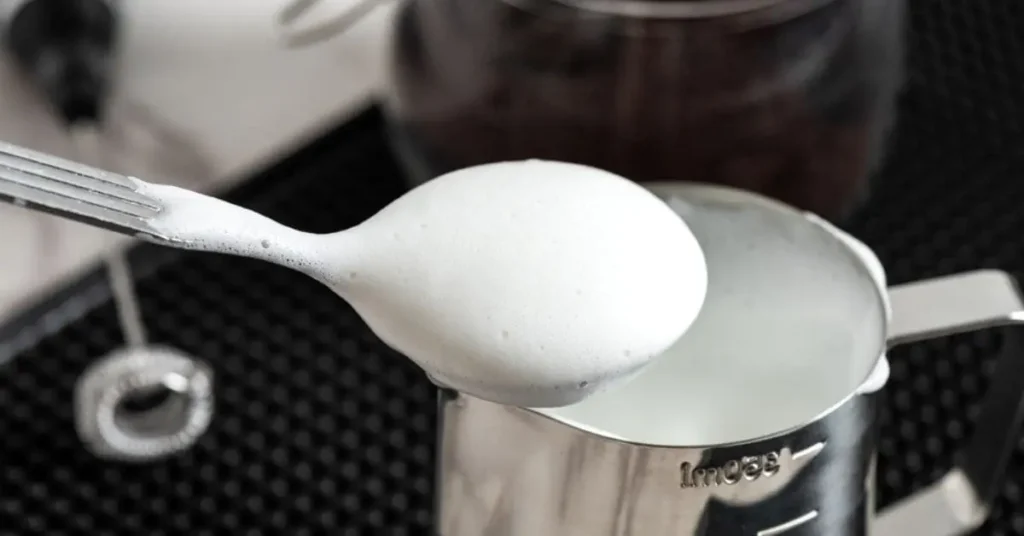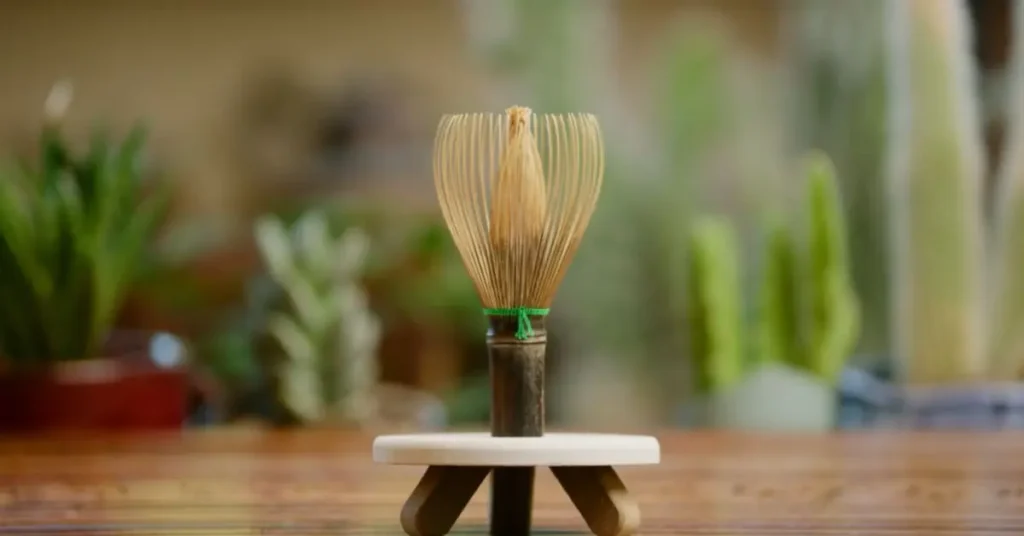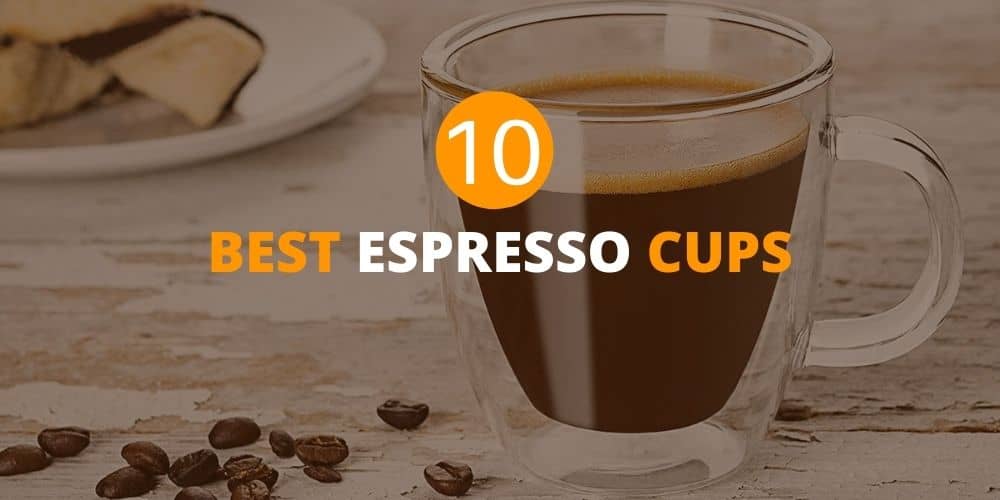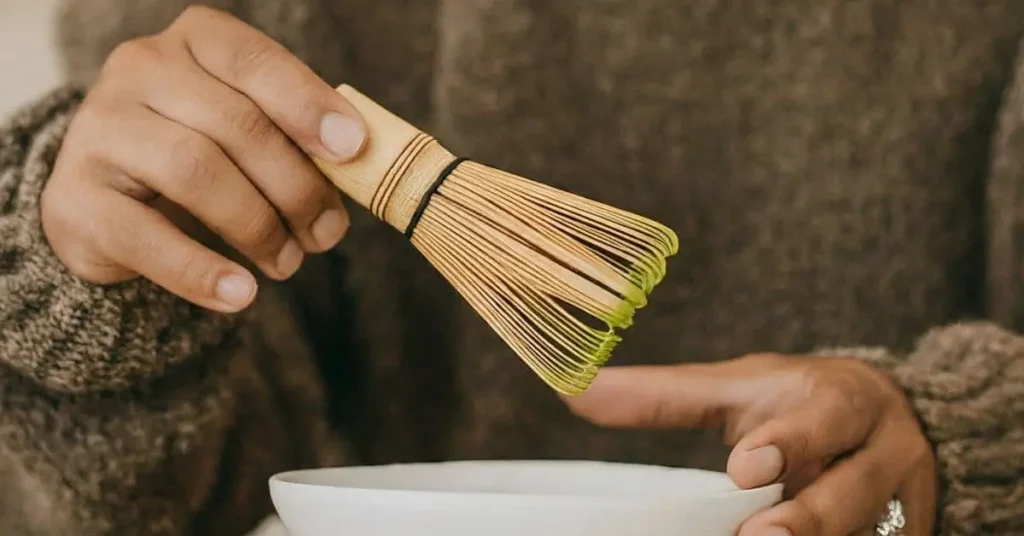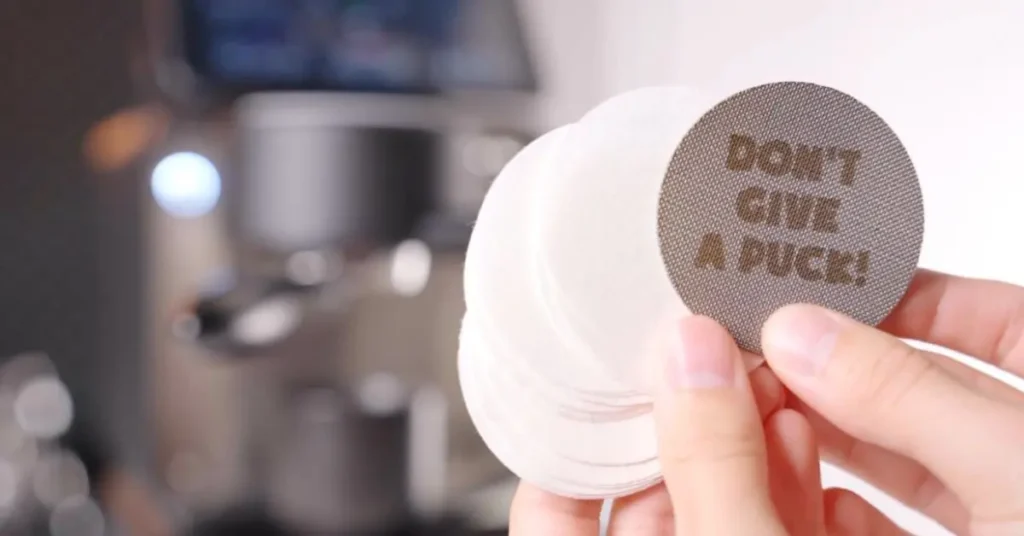A matcha whisk is used to traditionally mix and froth matcha powder by hand. A frother is an electric tool that can be used to mix and froth various types of drinks, including matcha lattes and other beverages.
Matcha, a finely ground green tea, has gained popularity for its health benefits and unique flavor. Making the perfect matcha beverage involves the proper mixing and frothing of the powder. Both a matcha whisk and a frother can accomplish this, but they have distinct differences in terms of usability and results.
The History of Traditional Matcha Whisk
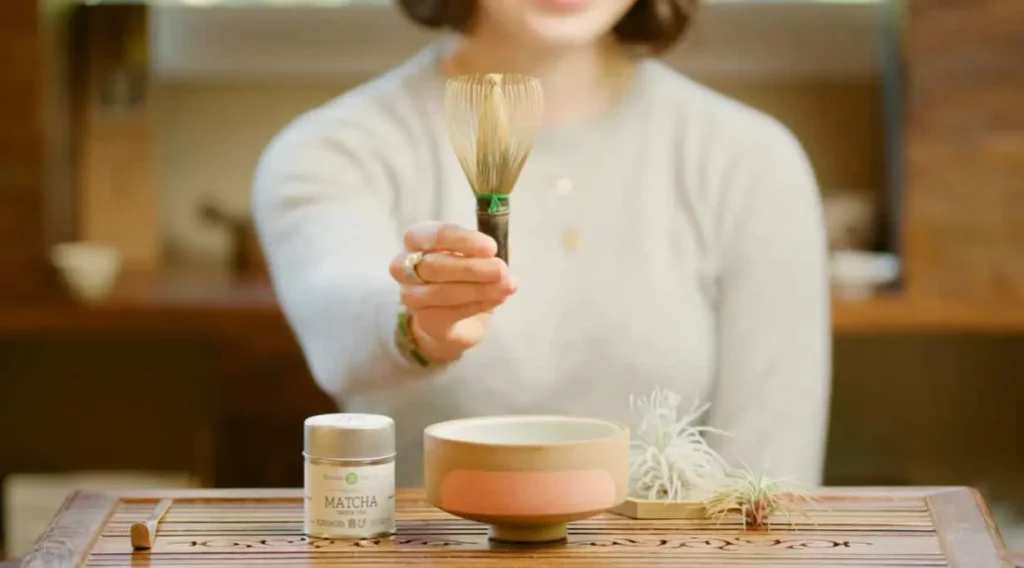
The traditional matcha whisk, known as a chasen in Japanese, is an essential tool for preparing matcha. Made from a single piece of bamboo, these handcrafted whisks have carefully split and curved tines that allow for efficient mixing and frothing of the matcha powder.
The chasen helps to whisk the matcha powder into a smooth, frothy consistency, ensuring that every sip of matcha has a creamy and velvety texture. It also helps to break up any clumps and fully incorporate the powder with the hot water, allowing the flavor to fully develop.
Using a traditional matcha whisk is not just about preparing the perfect cup of matcha, but it is also a nod to the long-standing tradition and history behind this beloved beverage. The rhythmic whisking motion and the delicate sound of the bamboo bristles against the ceramic bowl create a calming and meditative experience.
While modern electric frothers and blenders are available as convenient alternatives, they do not provide the same level of precision and attention to detail that comes with using a traditional matcha whisk. They may not fully incorporate the powder or create the same frothy texture that enhances the overall drinking experience.
The traditional matcha whisk is not only a tool but also a symbol of the reverence and mindfulness that goes into preparing matcha. It connects us to the rich history and traditions of tea culture, allowing us to appreciate and savor every sip of this ancient beverage.
The Role Of The Matcha Whisk In Tea Ceremony
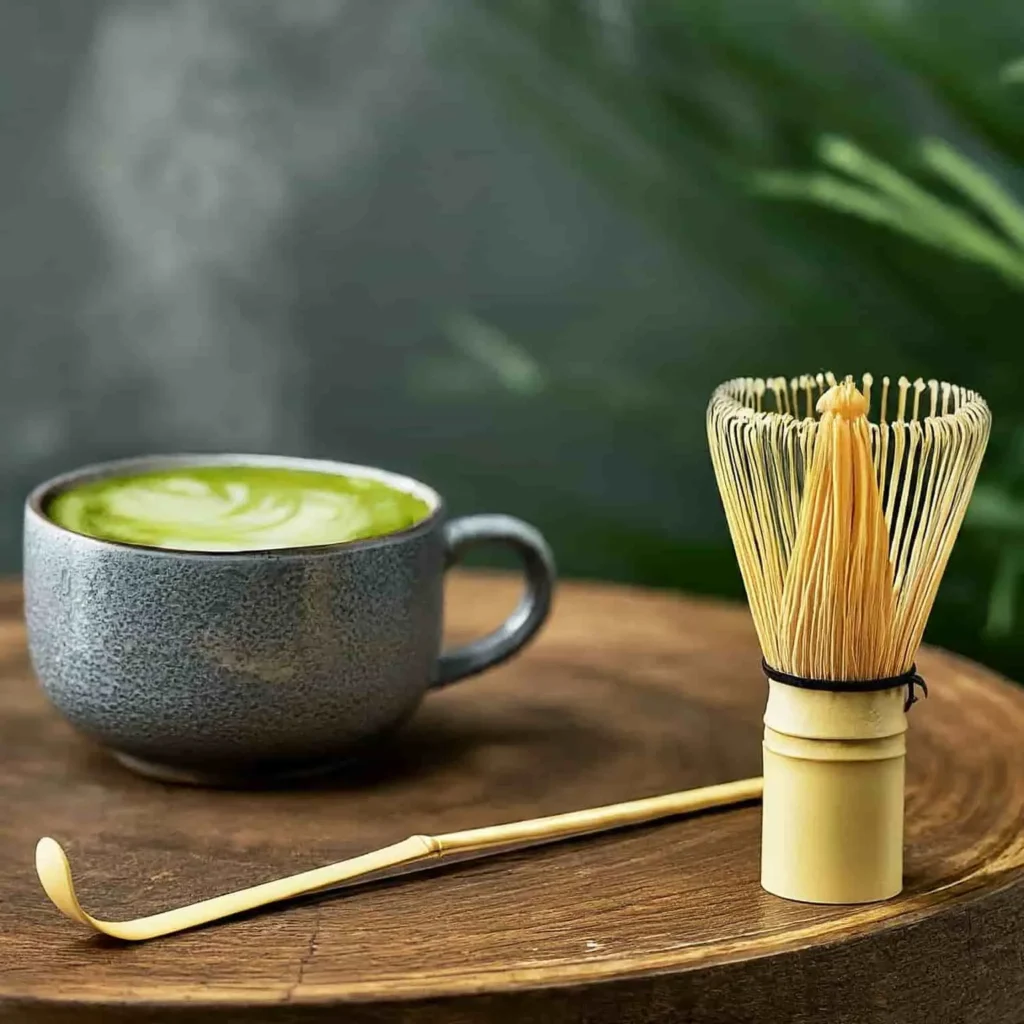
Significance In Japanese Culture
The matcha whisk holds immense significance in Japanese culture as it is an integral part of the traditional tea ceremony. This centuries-old practice, known as “sadō” or “chadō” emphasizes the beauty of simplicity and the pursuit of inner peace.
In the tea ceremony, matcha is carefully whisked using a bamboo whisk, known as a “chasen.” This dedicated tool plays a crucial role in achieving the desired frothy texture and vibrant green color of the matcha.
Embraced as a form of art, the matcha whisk represents harmony, respect, purity, and tranquility – values deeply ingrained in Japanese culture. Its graceful, intricate design is a testament to the meticulous attention to detail and reverence for nature.
The Art Of Whisking Matcha
Whisking matcha is not merely a functional step but an art form in itself. The technique required to whisk matcha is known as “kata,” and it involves a precise sequence of graceful movements.
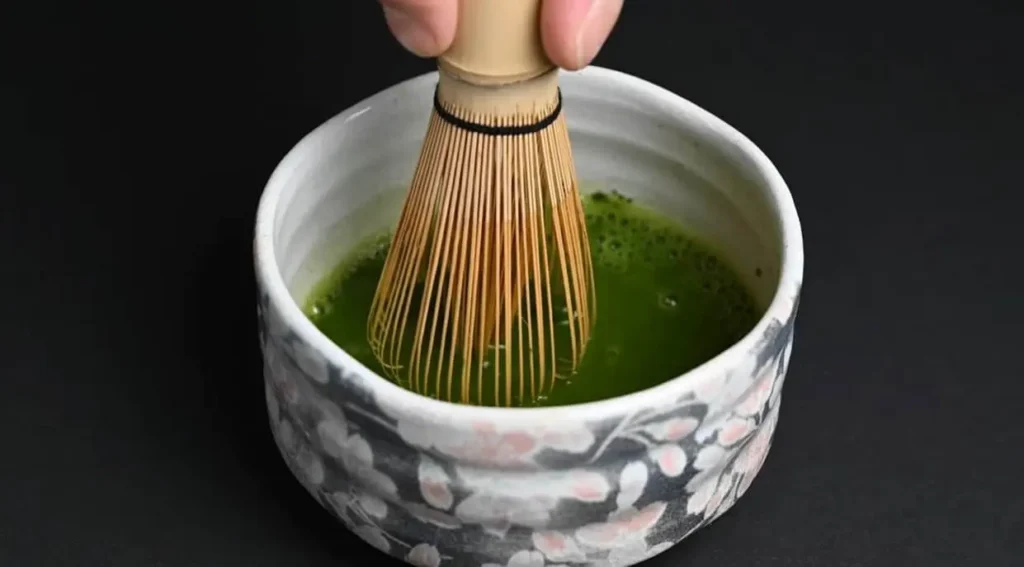
When preparing matcha, the whisk is gently but swiftly rotated in a back-and-forth motion to achieve even mixing and create a smooth, frothy consistency. This motion causes the matcha powder to suspend in the hot water, resulting in a rich, velvety brew.
The matcha whisk ensures that no clumps of powder are left behind, ensuring each sip is a harmonious infusion of flavor and texture. Its delicate bristles effortlessly blend the matcha, releasing its vibrant aroma and creating a visual delight.
While modern electric frothers have gained popularity for their convenience, they lack the authentic essence of the traditional tea ceremony. The matcha whisk not only produces superior results but also adds to the overall experience, engaging all the senses.
Related Read: Matcha Latte 101: History, Benefits, Recipe, And More
The Emergence Of Frothers In Matcha Preparation
In recent years, matcha has gained tremendous popularity as a healthy and refreshing drink. The traditional way to prepare matcha involves using a bamboo whisk called a Chasen.
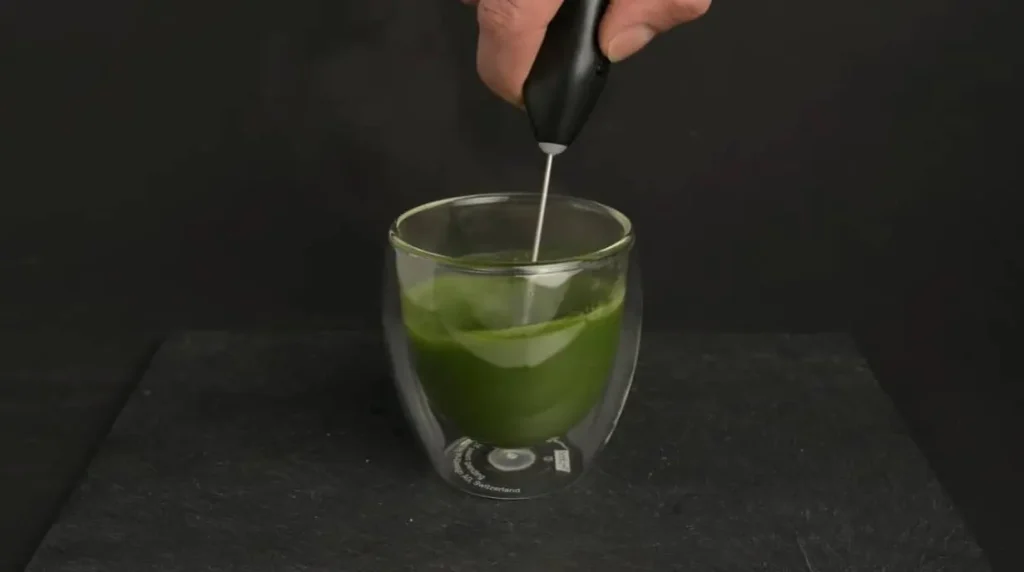
However, with the growing demand for convenience and time efficiency, a new player has emerged in the matcha world: frothers. These handheld devices offer a quick and easy way to prepare matcha without the need for a traditional whisk.
Benefits Of Using Frothers
- Time-saving: With a frother, you can prepare a frothy cup of matcha in a matter of seconds. This is particularly convenient for busy individuals who don’t have the time to whisk their matcha by hand.
- Consistency: Frothers ensure a consistent texture throughout the matcha, avoiding any lumps or clumps that may occur when whisking by hand. This guarantees a smooth and enjoyable drinking experience every time.
- Efficiency: Frothers can quickly incorporate air into the matcha, resulting in a light and airy froth that enhances the overall taste and visual appeal of the drink.
Drawbacks Of Using Frothers
- Dependency on power: Unlike traditional whisks that rely solely on manual effort, frothers require a power source. This can be a drawback if you find yourself without access to electricity or batteries.
- Less control: Frothers may not provide the same level of control as a traditional whisk. The intensity of the whisking action can vary depending on the device, potentially impacting the final texture and frothiness of the matcha.
Comparing The Techniques: Matcha Whisk Vs. Frother
When it comes to preparing a perfect cup of matcha, the choice of implementation is crucial. The traditional matcha whisk and the modern frother each offer their distinctive techniques, affecting the flavor, texture, and overall enjoyment of the matcha drinking experience.
Whisking Process And Impact On Flavor
The process of whisking matcha with a traditional bamboo whisk, also known as a chasen, is a ritual that dates back centuries in Japanese tea culture. The delicate, rapid motion of the whisk creates a rich, frothy layer on the surface of the matcha, allowing the flavor to fully develop. This method imparts a smoother and more aromatic taste to the matcha, as the whisk gently incorporates and aerates the powder, enhancing its natural umami flavor.
Texture And Consistency Of Matcha
When using a matcha whisk, the resulting matcha has a smooth, velvety texture with a consistent distribution of the powder. The frothy layer achieved through traditional whisking adds a lightness to the matcha, creating a visually appealing and enjoyable drinking experience. The continuous motion of the whisk contributes to the ideal balance of froth and liquid in every sip, enhancing the overall taste and mouthfeel of the matcha.
Making The Best Choice For Your Matcha Ritual
The choice between a matcha whisk and a frother can greatly impact your matcha ritual. If you are a matcha enthusiast, finding the best tool for whisking your matcha powder is crucial.
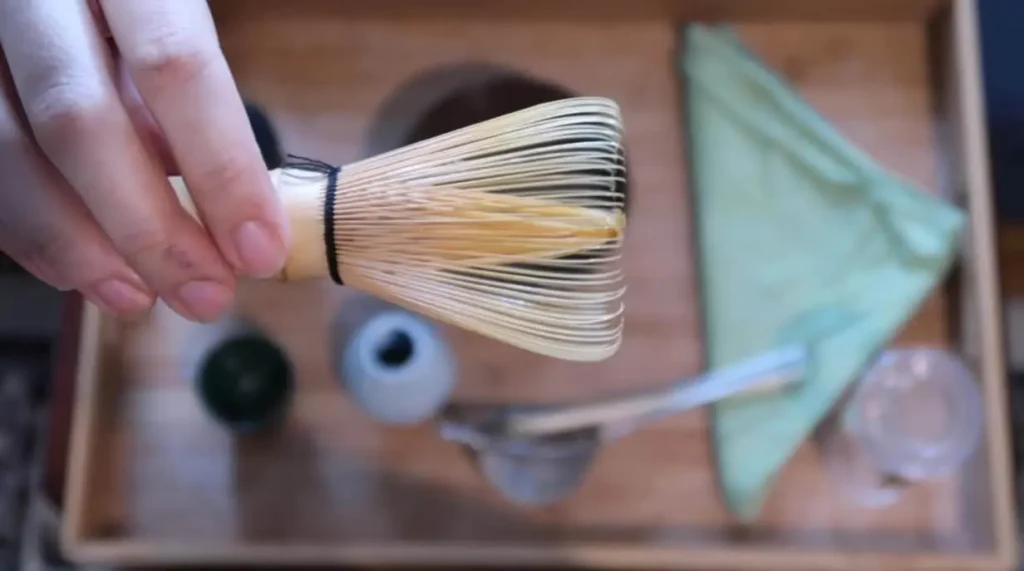
When considering tradition and authenticity, the matcha whisk holds significance for those who value the traditional Japanese tea ceremony. On the other hand, the frother offers efficiency and convenience suitable for the modern lifestyle.
Considering Tradition And Authenticity
For those who appreciate the deep-rooted traditions of matcha preparation, the matcha whisk enhances the ceremonial experience. The art of whisking matcha with a bamboo whisk has been a ritualistic practice in Japanese culture for centuries. This traditional method brings a sense of authenticity and reverence to the matcha-making process.
Efficiency And Convenience In Modern Lifestyle
In the fast-paced modern world, where time is of the essence, the frother stands out as a convenient tool for preparing matcha. With its ability to quickly and effectively mix matcha powder and water, the frother is ideal for individuals with busy schedules. Its efficient operation aligns well with the demands of a contemporary lifestyle, allowing for a seamless matcha preparation process.
Conclusion
To sum up, both the matcha whisk and frother have their distinct advantages. The matcha whisk offers a traditional and authentic way of preparing matcha, ensuring a frothy and smooth consistency. On the other hand, the electric frother provides convenience and speed, producing similar results in a fraction of the time.
Ultimately, the choice between the two depends on personal preference and convenience. Whichever tool you choose, you’ll be able to enjoy the delightful and meditative experience of preparing and savoring a delicious cup of matcha.
A. I. Moon
A.I. Moon, an experienced SEO Pythonista, spends his days coding and developing web applications to help business owners. A passionate coffee enthusiast, he believes that drinking coffee fuels his creativity and productivity. His day isn't complete without the rich aroma and invigorating warmth of a perfectly brewed cup. This love for coffee inspired him to found EspressoRivo, a platform dedicated to sharing his coffee knowledge and fostering a community of passionate aficionados.
